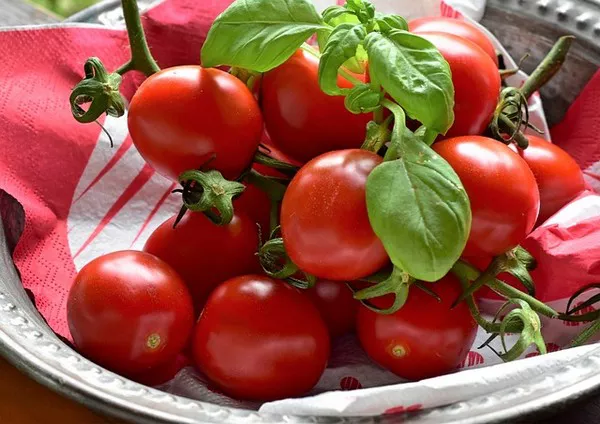Tomatoes, a staple in countless kitchens around the world, are not only delicious but also a versatile addition to a variety of dishes. For those with a green thumb or a desire to embark on the rewarding journey of gardening, cultivating robust tomato plants can be a fulfilling endeavor. In this comprehensive guide, we will delve into the essential steps and expert tips to ensure a bountiful harvest of juicy, flavorful tomatoes.
Choosing the Right Varieties
Before you start digging into the soil, it’s crucial to choose the right tomato varieties for your growing conditions and culinary preferences. Determinate varieties are compact and suitable for containers, while indeterminate varieties are known for continuous fruiting and benefit from staking or caging. Consider factors such as climate, available space, and desired tomato use (slicing, cherry, paste) when selecting your tomato varieties.
Ideal Growing Conditions
Tomatoes thrive in well-draining, nutrient-rich soil with a slightly acidic to neutral pH (around 6.0 to 7.0). It’s advisable to conduct a soil test to assess and adjust the pH accordingly. Choose a sunny location for your tomato bed, ensuring that plants receive at least 6-8 hours of sunlight daily. Adequate sunlight is crucial for photosynthesis, promoting healthy growth and fruit development.
Starting from Seeds or Seedlings
The choice between starting from seeds or purchasing seedlings depends on factors like time, space, and personal preference. Starting tomatoes from seeds allows for a wider selection of varieties and greater control over the growing conditions. Begin seeding indoors 6-8 weeks before the last expected frost date in your region. Use a high-quality seed-starting mix, keep the soil consistently moist, and provide adequate light with the help of grow lights.
If you opt for seedlings, purchase them from reputable nurseries or garden centers. Choose sturdy, disease-free seedlings with deep green foliage and a compact structure. Transplant seedlings into the garden after the danger of frost has passed and soil temperatures have warmed.
Proper Planting Techniques
Whether you’re planting seeds or seedlings, proper planting techniques are essential for the success of your tomato plants. When transplanting seedlings, bury them deep into the soil, leaving only the top few sets of leaves above the surface. This encourages the development of a robust root system, promoting stability and nutrient absorption.
Space tomato plants at least 18-24 inches apart to allow for adequate air circulation and prevent the spread of diseases. Consider installing supports, such as cages or stakes, to keep the plants upright and facilitate proper growth.
Watering and Fertilizing
Consistent and adequate watering is crucial for the health of tomato plants. Tomatoes prefer deep, consistent moisture to prevent issues like blossom end rot. Water the plants at the base in the morning to allow foliage to dry during the day, reducing the risk of fungal diseases.
Fertilize your tomato plants regularly throughout the growing season, following the recommendations on the chosen fertilizer package. A balanced fertilizer with equal amounts of nitrogen, phosphorus, and potassium supports overall plant health, with additional phosphorus promoting flower and fruit development.
Pruning and Training
Pruning and training are essential practices to encourage optimal growth and fruit production. Pinch off suckers, the small shoots that emerge between the main stem and branches, to direct energy toward fruit-bearing branches. Indeterminate varieties benefit from staking or caging to support the weight of the vines and prevent sprawling.
Disease and Pest Management
Tomatoes are susceptible to various diseases and pests, including blight, aphids, and hornworms. Regularly inspect your plants for signs of disease, such as yellowing leaves or spotted foliage. To prevent common tomato diseases, use proper sanitation practices, rotate crops yearly, and choose disease-resistant varieties.
Natural remedies, such as neem oil or insecticidal soap, can help control pest infestations without harming beneficial insects. Introduce companion plants like basil and marigolds to deter pests and promote a healthier growing environment.
Harvesting and Ripening
Patience is key when it comes to harvesting tomatoes. Wait until the fruits reach their full color and have a slight give when gently squeezed. Harvesting too early can result in underripe, flavorless tomatoes. To ripen tomatoes indoors, place them in a paper bag with a banana or apple, as these fruits release ethylene gas, a natural ripening agent.
Conclusion
Growing robust tomato plants is a rewarding journey that requires careful planning, attention to detail, and a bit of patience. By selecting the right varieties, providing optimal growing conditions, and practicing proper care techniques, you can enjoy a bountiful harvest of delicious tomatoes. Whether you’re a seasoned gardener or a novice with a green thumb, cultivating tomatoes offers a tangible and tasty connection to the joys of gardening.


